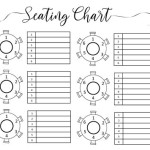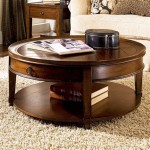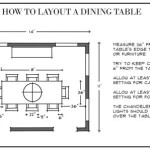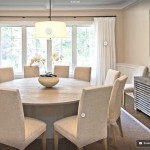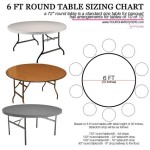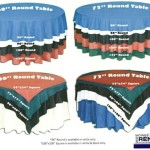Do You Use Placemats With a Tablecloth? Exploring Table Setting Etiquette and Practicality
The question of whether to use placemats with a tablecloth is a common one in the realm of table setting and dining etiquette. There is no single definitive answer, as the decision often hinges on a combination of factors including the occasion, the style of the tablecloth, the desired aesthetic, and practical considerations related to table protection and ease of cleanup. Understanding these factors allows for a thoughtful and informed approach to setting a table that is both visually appealing and functional.
Historically, tablecloths served primarily as a protective layer for the table beneath, shielding it from spills, stains, and heat damage. They also provided a clean and sanitary surface for dining, especially in eras when hygiene standards were different. Placemats, on the other hand, emerged as a more modern alternative, offering a focused area of protection for each individual diner and allowing for greater flexibility in table setting styles. The choice between using a tablecloth alone, placemats alone, or combining the two reflects evolving dining trends and personal preferences.
Protection of the Table Surface
One of the primary purposes of both tablecloths and placemats is to protect the table surface from damage. Hot plates, condensation from cold drinks, and accidental spills can all leave marks or stains on a table, particularly on wood or delicate finishes. A tablecloth provides a comprehensive layer of protection over the entire table, while placemats offer localized protection directly under each guest's place setting. When considering whether to use placemats with a tablecloth, the level of protection desired should be a key consideration.
For everyday meals, a tablecloth alone might suffice if the table is durable and resistant to damage. However, for formal occasions or when using a delicate or antique table, the added layer of protection provided by placemats can be invaluable. Placemats can help absorb spills and prevent heat from reaching the tablecloth, minimizing the risk of stains and burns. Furthermore, they can prevent scratches from cutlery or serving dishes, ensuring the longevity of both the tablecloth and the table itself.
The type of tablecloth material also plays a role in the decision. Tablecloths made from thick, absorbent fabrics offer greater protection than those made from thin or delicate materials. If using a lightweight or sheer tablecloth, placemats are particularly recommended to provide an extra barrier against spills and heat. Conversely, a heavy, quilted tablecloth might offer sufficient protection on its own, reducing the need for additional placemats.
Aesthetic Considerations and Table Setting Style
Beyond protection, the aesthetic impact of using placemats with a tablecloth is significant. The combination can create a layered and visually appealing table setting, adding depth and texture to the overall presentation. The choice of colors, patterns, and materials for both the tablecloth and placemats allows for a wide range of stylistic expressions, from formal and elegant to casual and contemporary.
For formal occasions, such as weddings or banquets, the use of both a tablecloth and placemats is often considered standard etiquette. A crisp white tablecloth, paired with elegant placemats in a coordinating color or material, can create a sophisticated and polished look. The placemats can serve as a visual frame for each place setting, highlighting the individual elements and creating a sense of order and refinement. In these settings, the placemats are often chosen to complement the china, glassware, and silverware, contributing to a cohesive and harmonious aesthetic.
In more casual settings, the choice of whether to use placemats with a tablecloth is more flexible. A patterned tablecloth can be paired with simple, understated placemats to avoid overwhelming the eye. Alternatively, a solid-colored tablecloth can serve as a backdrop for more decorative placemats, allowing them to stand out as focal points. The key is to create a balanced and visually pleasing composition that reflects the overall style of the meal and the occasion. For example, a rustic linen tablecloth could be paired with woven placemats for a natural and organic feel, while a bright, contemporary tablecloth might be complemented by sleek, minimalist placemats in a contrasting color.
Practicality and Ease of Cleanup
The practical aspects of table setting, particularly ease of cleanup, are important considerations. While a tablecloth provides comprehensive coverage, it also requires laundering or dry cleaning after each use. Placemats, on the other hand, are typically easier to clean, often requiring just a quick wipe with a damp cloth. The decision of whether to use placemats with a tablecloth can therefore be influenced by the frequency of use and the time commitment involved in cleaning.
For everyday meals, using placemats without a tablecloth can be a more convenient option, as they can be quickly cleaned and stored. However, for larger gatherings or formal dinners, the use of a tablecloth can provide a more sanitary and aesthetically pleasing surface. In these cases, using placemats in conjunction with a tablecloth can help contain spills and prevent stains from spreading to the tablecloth itself, simplifying the cleanup process.
The material of the placemats also affects their practicality. Placemats made from waterproof or stain-resistant materials are particularly useful for preventing spills from soaking through to the tablecloth. These materials can be easily wiped clean, minimizing the need for frequent laundering. Similarly, placemats with a non-slip backing can help prevent them from sliding around on the tablecloth, ensuring that each place setting remains stable and secure throughout the meal.
Another practical consideration is the size and shape of the table. On smaller tables, the use of both a tablecloth and placemats might make the table feel crowded. In these cases, choosing either a tablecloth or placemats alone might be a more appropriate option. Conversely, on larger tables, the combination of a tablecloth and placemats can help fill the space and create a more visually balanced setting. The shape of the table also influences the choice of placemats. Rectangular tables are well-suited to rectangular placemats, while round tables can be complemented by round or square placemats.
Ultimately, the decision of whether to use placemats with a tablecloth is a matter of personal preference and practical consideration. There are no strict rules, and the best approach is to experiment with different combinations to find what works best for each individual situation. By considering the level of protection desired, the aesthetic impact, and the ease of cleanup, one can create a table setting that is both beautiful and functional.
The Great Debate Placemats Or Tablecloths Which Are Better Lc Studios

How To Set The Table With Placemats

How To Use Placemats Ultimate Style Guide French Affair

How To Use Placemats Ultimate Style Guide French Affair

20 40 60 Etiquette Setting The Table Tone For Your Dinner Party

How To Buy The Right Tablecloth Or Placemats For Every Table And Occasion Cbc Life

7 Tips For Storing Your Table Linens

Should You Use Placemats With A Tablecloth Combinations Positioning Tips Tablecoversnow Com
The Great Debate Placemats Or Tablecloths Which Are Better Lc Studios

How To Match Tablecloth Napkins Runners And Placemats 4 Styles For All Occasions
Related Posts

